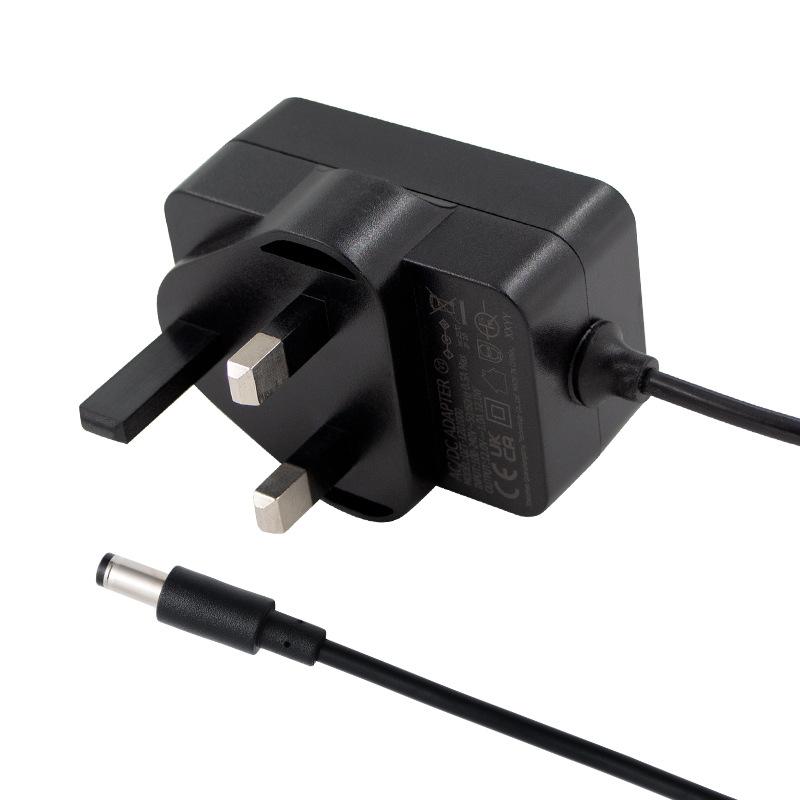This article discusses 24V adapters, their features, commonly used devices, and the differences between 24V and 12V adapters.
What are 24V adapters?
24V adapters are power supply units that convert alternating current (AC) from a wall outlet into direct current (DC) at 24 volts.
24V adapters typically have an AC input voltage range of 100-240V, allowing them to be used with different mains voltages worldwide. The output is a regulated 24V DC voltage, with varying current ratings (e.g., 0.5A, 1A, 2A, etc.) to match the power requirements of the connected device. They often have a barrel-type DC connector or terminal block for connecting the output to the device.
24V adapters offer a convenient way to power low-voltage DC devices without the need for hardwiring or complex installations, making them suitable for various residential, commercial, and industrial applications.
These are some features of 24V adapters.
- Compact and lightweight design for portability
- LED indicator lights to show power status
- Over-voltage, over-current, and short-circuit protection
- Durable casing and long cable lengths for flexibility
- Compliance with safety standards like UL, CE, FCC, etc.
What devices commonly use 24V adapters?
24V adapters are commonly used to power various electronic devices and appliances that require a 24V DC input.
The 24V DC output from these adapters provides a convenient and regulated power source for devices that require a low-voltage DC input but are designed to be powered from a standard AC mains outlet. The adapters convert the AC voltage to the required 24V DC, allowing these devices to operate safely and efficiently without the need for complex wiring or power supplies.
- LED lighting systems (strip lights, under-cabinet lights, etc.)
- Security cameras and CCTV systems
- Industrial equipment and machinery
- Audio/video equipment (soundbars, amplifiers)
- Certain power tools and cordless tool battery chargers
What are the differences between 24V and 12V adapters?
12V adapters are more common for consumer devices and shorter distances. While both can provide the same power output, 24V adapters are advantageous for longer cable runs, industrial applications, and improved efficiency.
The differences between 24V and 12V adapters are as follows.
Voltage Output
24V adapters provide an output voltage of 24 volts DC.
12V adapters provide an output voltage of 12 volts DC.
Current Requirements
For the same power output, 24V adapters require lower current than 12V adapters. For example, a 24W adapter would need 1A at 24V but 2A at 12V.
Lower current in 24V systems allows the use of smaller gauge wires over longer distances without significant voltage drop.
Applications
24V adapters are commonly used for industrial equipment, LED lighting systems, security cameras, and applications requiring longer cable runs.
12V adapters are more prevalent for automotive/marine applications, RV appliances, and devices with shorter cable requirements.
Efficiency
24V systems are generally more efficient, especially for motors and inverters, due to lower current and resistive losses.
Compatibility
Devices are designed to operate at a specific voltage, so the adapter voltage must match the device's rated voltage.
Using a mismatched voltage adapter can damage the device.
Availability
12V adapters are more widely available for consumer electronics and appliances.
24V adapter options may be more limited for certain applications.
Why use 24V instead of 12V
While 12V systems are more common for low-power applications, 24V systems offer significant advantages for larger electrical systems, longer wiring runs, and high-power applications, despite slightly higher component costs.
These are several advantages to using a 24V system instead of a 12V system.
- Higher Efficiency. 24V systems have lower current draw for the same power output, resulting in reduced resistive losses and increased efficiency. Higher voltage input allows inverters and DC-DC converters to operate more efficiently.
- Smaller Wire Gauge. At 24V, the current is halved compared to 12V for the same power, allowing the use of smaller and less expensive wiring. This reduces wiring costs, especially for longer cable runs.
- Longer Wiring Distances. Lower current in 24V systems means less voltage drop over long cable lengths. This allows powering devices at greater distances from the power source.
- Higher Power Handling. 24V systems can handle higher power loads more efficiently than 12V systems. This makes 24V better suited for applications with high power demands like air conditioners, power tools, etc.
- Larger Battery Banks. It's easier to build larger capacity battery banks with 24V by wiring 12V batteries in series. This provides more usable battery capacity compared to a 12V bank of the same amp-hour rating.
How do I convert 12V to 24V
To convert 12V to 24V, you generally need a voltage booster or step-up converter. These devices take an input voltage (in this case, 12V) and increase it to a higher output voltage (in this case, 24V).
Here's a basic overview of how you can do it.
- Choose the right step-up converter. Look for a step-up converter or voltage booster that can handle your input voltage (12V) and provide the desired output voltage (24V). Make sure to check the specifications and ensure it can handle the current requirements of your application.
- Connect the input. Connect the 12V power source to the input terminals of the step-up converter. This is usually straightforward and may involve connecting positive (+) and negative (-) terminals to the corresponding input terminals of the converter.
- Adjust settings (if necessary). Some step-up converters may have adjustable settings such as output voltage or current limit. If needed, adjust these settings according to your requirements. Make sure to follow the manufacturer's instructions for adjusting settings.
- Connect the output. Connect your load (device that needs 24V power) to the output terminals of the step-up converter. Again, ensure proper polarity (positive to positive, negative to negative) to avoid damaging your load.
- Test and monitor. Once everything is connected, test the setup to ensure that the output voltage is stable and within the desired range. Monitor the setup for any signs of overheating or other issues, especially during initial testing.








